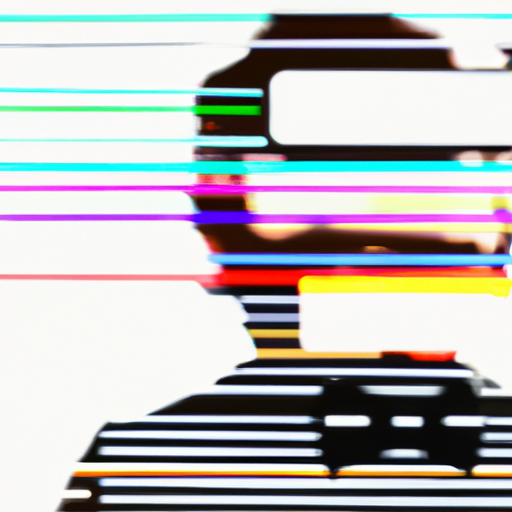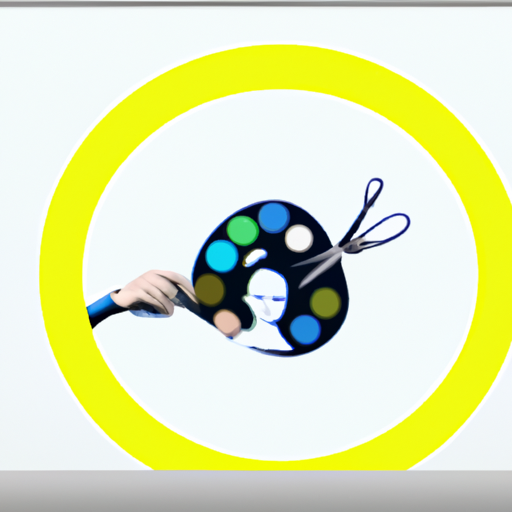
-
Table of Contents
- Abstract Graphic Art: Expressing Emotion through Design
- The Evolution of Abstract Graphic Art
- The Role of Color in Abstract Graphic Art
- The Power of Shapes and Lines in Abstract Graphic Art
- Case Studies: Abstract Graphic Art in Practice
- Case Study 1: Jackson Pollock’s “No. 5, 1948”
- Case Study 2: Mark Rothko’s Color Field Paintings
- The Impact of Abstract Graphic Art
- Conclusion
Abstract Graphic Art: Expressing Emotion through Design

Abstract graphic art is a form of visual expression that allows artists to convey emotions, ideas, and concepts through non-representational and non-objective designs. Unlike traditional art forms that aim to depict reality, abstract graphic art focuses on the use of shapes, colors, lines, and textures to create a visual language that evokes emotions and stimulates the viewer’s imagination. In this article, we will explore the power of abstract graphic art in expressing emotions and how it has evolved over time.
The Evolution of Abstract Graphic Art
Abstract art emerged as a significant movement in the early 20th century, challenging the traditional notions of representation and realism. Artists like Wassily Kandinsky, Piet Mondrian, and Kazimir Malevich sought to break free from the constraints of depicting the physical world and instead focused on the inner world of emotions and ideas.
One of the pioneers of abstract art, Wassily Kandinsky, believed that colors and shapes had inherent emotional and spiritual qualities. He aimed to create a universal language of art that could transcend cultural and linguistic barriers. Kandinsky’s famous painting “Composition VII” is a prime example of his use of abstract forms and vibrant colors to express complex emotions.
Another influential artist, Piet Mondrian, developed a style known as neoplasticism, which emphasized the use of geometric shapes and primary colors. Mondrian believed that through simplification and abstraction, he could achieve a universal harmony that would resonate with the viewer’s emotions. His iconic painting “Composition with Red, Blue, and Yellow” is a testament to his belief in the power of abstract design to evoke emotions.
The Role of Color in Abstract Graphic Art
Color plays a crucial role in abstract graphic art as it has the ability to evoke specific emotions and create a particular mood. Artists carefully select colors based on their psychological impact and the desired emotional response from the viewer.
For example, warm colors such as red, orange, and yellow are often associated with energy, passion, and excitement. These colors can create a sense of warmth and intensity in abstract graphic art. On the other hand, cool colors like blue, green, and purple are often associated with calmness, tranquility, and introspection. These colors can evoke a sense of serenity and peacefulness in abstract designs.
Artists also use color combinations to create contrast and balance in their compositions. Complementary colors, such as red and green or blue and orange, create a vibrant and dynamic visual impact. Analogous colors, such as blue and purple or yellow and orange, create a harmonious and soothing effect. By carefully selecting and combining colors, artists can effectively convey different emotions and moods in their abstract graphic art.
The Power of Shapes and Lines in Abstract Graphic Art
Shapes and lines are fundamental elements of abstract graphic art that can convey emotions and ideas without relying on representational imagery. Geometric shapes, such as squares, circles, and triangles, can create a sense of order, stability, and balance. These shapes often evoke feelings of harmony and perfection.
On the other hand, organic shapes, such as curves, spirals, and irregular forms, can create a sense of movement, fluidity, and dynamism. These shapes often evoke feelings of energy and vitality. Artists use a combination of geometric and organic shapes to create visual interest and convey different emotions in their abstract designs.
Lines are another powerful tool in abstract graphic art. Horizontal lines can create a sense of calmness and stability, while vertical lines can evoke a sense of strength and power. Diagonal lines can create a sense of movement and tension. Artists use different types of lines, such as straight, curved, or jagged, to create visual rhythms and convey specific emotions in their abstract compositions.
Case Studies: Abstract Graphic Art in Practice
Let’s explore some case studies that demonstrate the effective use of abstract graphic art in expressing emotions:
Case Study 1: Jackson Pollock’s “No. 5, 1948”
Jackson Pollock, an influential abstract expressionist artist, is known for his unique style of drip painting. His painting “No. 5, 1948” is a prime example of how abstract graphic art can convey emotions without relying on recognizable imagery. The chaotic and energetic composition, created by the drips and splatters of paint, evokes a sense of movement, energy, and raw emotion.
Case Study 2: Mark Rothko’s Color Field Paintings
Mark Rothko’s color field paintings are characterized by large blocks of vibrant colors that create a contemplative and immersive experience for the viewer. Rothko believed that his paintings could evoke deep emotions and spiritual experiences. By using color and form, Rothko aimed to create a direct emotional connection with the viewer, inviting them to reflect and contemplate.
The Impact of Abstract Graphic Art
Abstract graphic art has had a profound impact on the art world and beyond. It has challenged traditional notions of representation and opened up new possibilities for artistic expression. Abstract art has influenced various fields, including design, fashion, and advertising.
In design, abstract graphic art has been used to create visually striking and emotionally engaging compositions. Designers often incorporate abstract elements into their work to evoke specific emotions or convey a particular message. For example, a company may use abstract graphic art in their logo design to communicate innovation, creativity, or dynamism.
In fashion, abstract graphic art has inspired designers to create bold and unconventional patterns and prints. Abstract designs can add a sense of uniqueness and individuality to clothing and accessories. Fashion brands often collaborate with artists to incorporate abstract graphic art into their collections, creating a fusion of art and fashion.
In advertising, abstract graphic art can capture attention and create a memorable visual impact. Advertisers use abstract elements to convey emotions, tell stories, and communicate brand messages. Abstract designs can evoke curiosity, intrigue, and a sense of wonder, making them effective tools in advertising campaigns.
Conclusion
Abstract graphic art is a powerful form of visual expression that allows artists to convey emotions, ideas, and concepts through non-representational designs. Through the use of color, shapes, lines, and textures, abstract artists create a visual language that stimulates the viewer’s imagination and evokes specific emotions. From the pioneers of abstract art to contemporary artists, abstract graphic art continues to evolve and inspire. Its impact can be seen in various fields, from design to fashion and advertising. By embracing the power of abstract graphic art, we can explore new ways of expressing and experiencing emotions through design.
